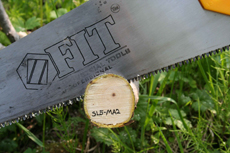Russian Arctic tundra is getting greener as climate warms
5.10.2009 15:15
New research has uncovered a significant clue in solving one of the lingering mysteries in climate change: what is causing the significant increase in Arctic tundra productivity detected by satellites since the early 1980s?
Groundbreaking research has been able to pinpoint what has long been suspected but never quantified. By studying the annual growth rings of a common and widespread willow species, an international team of researchers has determined that deciduous, or leafy, tundra shrubs closely track Russian Arctic warming and ’greening’. A regional increase in shrub cover has important implications for future climate due to feedbacks between the ground surface and earth’s atmosphere.
The UN’s Intergovernmental Panel on Climate Change has projected that global climate in the coming century will be 2-4 degrees Celsius warmer than today. Meteorological records from the East European Arctic and the Yamal Region of Northwest Siberia indicate that summer air temperatures have already risen by 2-3 degrees in the last 30 years. The UN panel cited studies indicating an increase in the Normalised Difference Vegetation Index, by which satellites can estimate levels of live biomass in tundra vegetation on the ground. Previous research had detected an increase in shrub abundance on the North Slope of Alaska by comparing new airphotos with ones from 1950. The assumption was that shrubs must be driving the increased ’greening’ observed from outer space. Until now this had not been quantified either in North America or the Russian Arctic, although the vegetation index signal indicated increasing greenness for certain tundra areas in both the eastern and western hemispheres. It was further assumed that climate warming was driving the shrub increase, but there could be other factors involved, such as a release from heavy grazing by large populations of wild reindeer (caribou).
Reindeer herders aware of changes
"In the earliest stages of this research I had information from Nenets reindeer herders, who are indigenous to the area, that shrubs seemed to have increased in height during their lifetime", explains lead author Bruce Forbes, who did his field research in Russia’s Nenets Autonomous Okrug, about 20 km inland from the coast of the Barents Sea. Being aware of the previous studies from Alaska and Canada, and knowing that the herders possess the most intimate knowledge of these territories, Forbes felt it was important to see if his team could quantitatively determine whether there had been any change in shrub growth in recent decades. "Nomadic herders now in their 50s reported that when they were young men following these same routes the shrubs were shorter, yet now animals can disappear from sight when browsing within thickets and subsequently be lost during migration. They were a bit surprised since they thought that their large and hungry herds would keep the shrubs from growing too tall".
Willows provide a better window on past climate than evergreens
Until now very little research has been done with annual growth rings of tundra shrubs because they are so small and difficult to analyze. The missing link in the question of how the tundra is becoming greener required a correlation between summer climate and deciduous shrubs. Traditionally, high latitude tree-ring studies have focused on the correlation between summer temperature and growth rings in evergreen species, such as pine, spruce and larch, which do not occur in the open tundra. A widespread weakening of this signal in recent years, known as the divergence problem of the northern forests, has seriously limited the use of evergreen species to track northern boreal and subarctic climate, much less in the tundra zones further north. As it turns out, the strength of the correlation between summer temperature and shrub growth in the chosen species (woolly willow, or Salix lanata) is actually much stronger than the relationships based on evergreen trees. The resulting high-quality chronology covers the period 1942-2005. Woolly willow has a wide geographic distribution and is readily preserved in permafrost. This species thus has great potential for extended temperature reconstructions further back in time for remote areas across the Arctic where meteorological stations are either lacking or have only short-term records.
Prof. Bruce Forbes of Arctic Centre, University of Lapland, led the study in cooperation with Dr. Marc Macias Fauria of the Biogeoscience Institute, University of Calgary, and Pentti Zetterberg from the Ecological Research Institute, University of Joensuu. Their paper will appear in the scientific journal Global Change Biology.
 |
 |
| Fig. 1. View of willow thicket along a lake shore on the Varandei tundra in the Nenets Autonomous Okrug with shrubs up to 2.5 m in height. |
Fig. 2 (right). Sample slices from the trunks of willow are typically less than 20 cm in diameter. The microscopic annual rings can represent nearly a century of growth and faithfully document summer temperatures for about 65 years. |
Contact:
- Bruce Forbes, Research Professor, Arctic Centre, University of Lapland,
tel. +358 40 8479202, bforbes@ulapland.fi,
- Marc Macias Fauria, Post-doctoral Fellow, Biogeoscience Institute, University of Calgary,
tel. +34 65 0675095, mmaciasf@ucalgary.ca
- Pentti Zetterberg, Quaternary geologist, Ecological Research Institute, University of Joensuu,
tel. +358-13-2513505, pentti.zetterberg@joensuu.fi
Press Release, 5.10.2009
Arctic Centre
University of Lapland
Box 122
FI-96101 Rovaniemi, Finland
|